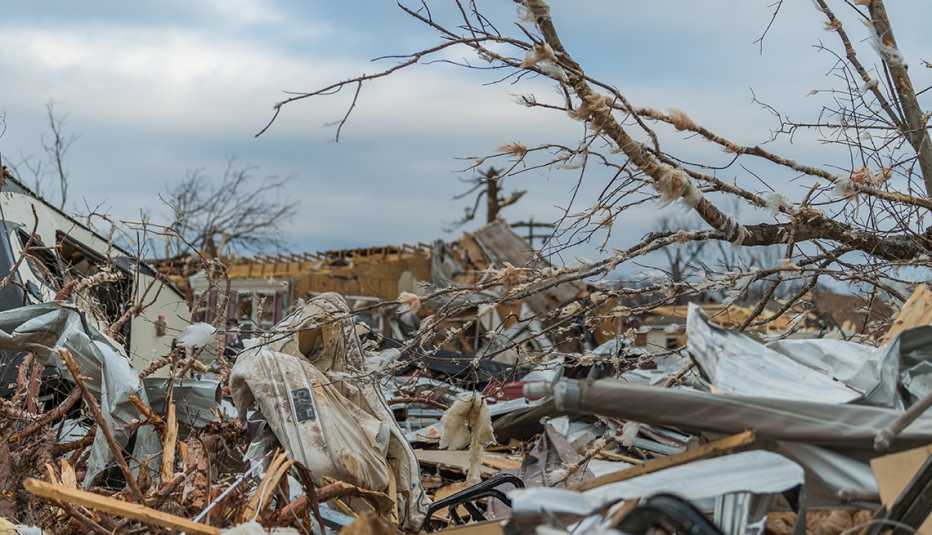“So you want to make sure you have proper insurance coverage,” he says.
Another reason to review your coverage is the effect inflation has on the cost of materials and repairs, says Mike Martinez, president and chief executive of M Martinez & Associates in Metairie, Louisiana. He has been through several natural disasters.
Otherwise, you may come up short when you file a claim.
“You could be left paying out-of-pocket expenses that could’ve been covered by insurance,” he says.
4. Take an inventory of your possessions
Next, create proof of your possessions. For your home and its contents, insurance carriers recommend using a video camera or your phone or tablet to document each room, zooming in closely, and adding narration to describe items of the highest value. You also can make a list on a spreadsheet or use an inventory app such as BluePlum Home Inventory, Itemtopia, National Association of Insurance Commissioners (NAIC) Home Inventory or Nest Egg.
Whatever method you use, review and revise it every year or anytime you do a significant remodel to your home or make a major purchase. You might also want to register expensive products such as electronics and appliances for any insurance or warranty claims. Don’t forget to include this inventory in your grab-and-go bag.
5. List phone numbers of local officials and insurers
When a storm or flood hits, you’ll want to let local officials know the damage you’ve incurred and what immediate assistance you need if you’re uninjured.
Make sure you have these important nonemergency numbers on your phone and in your go bag. Get mobile phone numbers for local contacts in addition to office numbers when you can and national phone numbers for companies such as your insurer because a local office also may be damaged.
Video: 3 Reasons Why Older Adults Become Scam Targets After a Disaster
Unfortunately, some people will take advantage of those who need help. So be alert to scammers and price gougers, says Chuck Czajka, a certified estate planner and founder of Macro Money Concepts in Stuart, Florida.
“Document everything and communicate with your insurance providers to understand what they will cover and what you will need to pay out of pocket,” he says. “Be patient, A natural disaster typically impacts many people. Recovery and repair times may take days, weeks or even months.”
6. Have a rainy day fund to tide you over
Have a cash stash to cover unexpected bills so you won’t be forced to raid your retirement fund to cover living expenses.
That’s especially true in the event of a calamity, Martinez says. If your home is damaged or gone, you’ll need money for a place to live, among other things.
“After a disaster, the cost of water, food, hotel stays, transportation, etc., will need to come out of an emergency fund,” he says.
Insurance companies, FEMA and other government agencies can take weeks to help.
“Having the funds available to cover that waiting period will feel like a lifesaver at a terrible time,” Sorensen says.
7. Be ready with a stash of essentials
If your state or locality has sales tax holidays or other disaster preparation efforts that make it easier for you to stock up for a disaster such as a hurricane, Czajka recommends participating. According to the Federation of Tax Administrators:
- Alabama has an annual tax holiday on generators that cost $1,000 or less on the last full Friday, Saturday and Sunday in February.
- Florida has a list of more than 30 items exempt from sales tax for purchases of a specific amount or less from June 7 to 20 and Aug. 23 to Sept. 5, 2025. It also has a tool sales tax holiday, Aug. 31 to Sept. 6.
- Puerto Rico has a tax holiday on hurricane preparedness items, usually the last weekend in May but announced in early May.
- Texas has an emergency preparation supplies sales tax holiday April 26-28, 2025.
“When it comes to food and water, anticipate needing at least a week’s worth,” Czajka says. Medications should be up to date and refilled. You should also have flashlights and batteries, a backup battery for your phone, and some cash in case of a power outage. Credit cards and ATMs may not be usable. “Your home may be unlivable in the event of a natural disaster, so having a backup plan for shelter and food is critical.”
8. Take care of yourself and your loved ones
Finally, Lum says to prioritize self-care and seek emotional support in a time of great distress.
“Recovering from a disaster can be stressful and overwhelming, and it’s important to take care of oneself during the process,” he says. “Maybe take some time and visit family.”






































































More From AARP
8 Ways to Regain Your Financial Footing After a Natural Disaster
Tax breaks, federal aid and savvy asset allocation can help you recover from the monetary setbacks
I Lived in a Town Immune From Natural Disasters – Until It Wasn’t
Hurricane Helene hit Asheville, N.C., with a force the region had never seen. Get a first-hand account from a survivor.
Essential Technology to Have During Natural Disasters
Free apps and affordable gadgets can help before and after extreme weather, so plan now